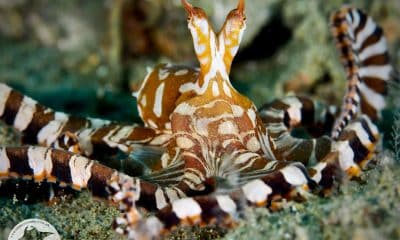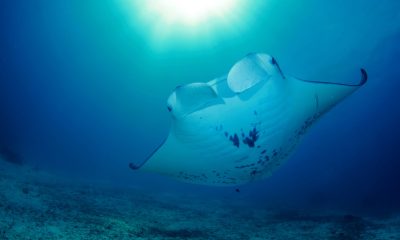News
Komodo: the underwater laboratory
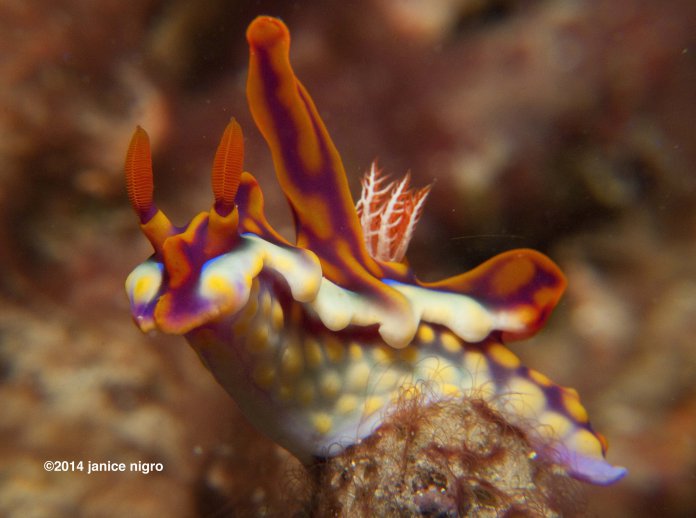
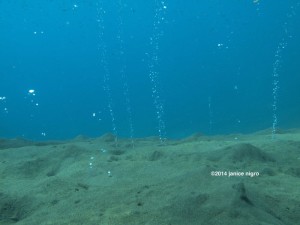 Volcanic gas bubbles were percolating from the sandy bottom below me. Yellow particles of sulfur that had precipitated out of these gases from Sangeang Volcano, dusted the perfectly black sand, and the sand was warm to the touch. I thought, it is a good thing that I have my underwater “safety goggles” on, as it was my first sense that in the sea in Komodo a delicate (or perhaps explosive) experiment was still in progress. There in front of me I felt like I had an eyewitness view below the surface of the ocean to the basic ingredients necessary to cook-up life.
Volcanic gas bubbles were percolating from the sandy bottom below me. Yellow particles of sulfur that had precipitated out of these gases from Sangeang Volcano, dusted the perfectly black sand, and the sand was warm to the touch. I thought, it is a good thing that I have my underwater “safety goggles” on, as it was my first sense that in the sea in Komodo a delicate (or perhaps explosive) experiment was still in progress. There in front of me I felt like I had an eyewitness view below the surface of the ocean to the basic ingredients necessary to cook-up life.
Komodo lies in Indonesia within the Coral Triangle, where the richest biodiversity in marine life resides. However, Komodo probably made an unforgettable first impression on me, like most kids growing up in the Midwest, through the images of a land animal, the Komodo dragon. I could not have imagined then, mesmerized in front of the TV, that it would be through scuba diving that I would get there.
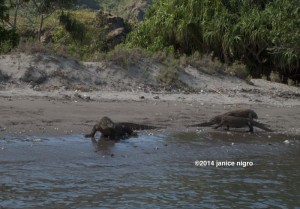 As a dive destination, Komodo is known for its swift currents and cool thermoclines. Based on these characteristics, I was somewhat reluctant to dive Komodo. Furthermore, reading about diver mishaps in Komodo, which is easy to do because of the Internet, did not settle the issue. A culmination of a diver’s worst nightmare in Komodo was actually a true story: divers had been both swept away and had to fight off Komodo dragons after finding refuge on an island. I am not in for that much adventure (or effort), but what I discovered, is that divers in Komodo who are most vulnerable to these incidents are the ones from liveaboards without dedicated boat tenders. I decided then that for my Komodo experience, I would take the Seven Seas, a big boat, with an attentive crew, that is well known for establishing underwater exploration of the area as a dive destination.
As a dive destination, Komodo is known for its swift currents and cool thermoclines. Based on these characteristics, I was somewhat reluctant to dive Komodo. Furthermore, reading about diver mishaps in Komodo, which is easy to do because of the Internet, did not settle the issue. A culmination of a diver’s worst nightmare in Komodo was actually a true story: divers had been both swept away and had to fight off Komodo dragons after finding refuge on an island. I am not in for that much adventure (or effort), but what I discovered, is that divers in Komodo who are most vulnerable to these incidents are the ones from liveaboards without dedicated boat tenders. I decided then that for my Komodo experience, I would take the Seven Seas, a big boat, with an attentive crew, that is well known for establishing underwater exploration of the area as a dive destination.
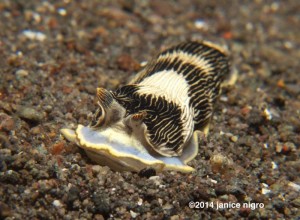 Komodo, like most of Indonesia, is a string of islands created by volcanic eruptions. To dive Sangeang early in the itinerary was a prelude to the park not only because it is a volcano, but because it also seems to set time back to the beginning. It is particularly fascinating to me as a diver, as there is a combination of geological, geographical as well as biological phenomena to experience. Smoke plumes surround the peak of Sangeang, but that it is active, is more easily viewed on the sea floor at dive sites like the one described above, Tiny Bubbles. It is an ethereal place, dark because of the black rock, but clearly rich with nutrients for the plethora of vibrantly colored soft corals growing like wall hangings from the blocks of volcanic basalt. It has the feeling of an underwater burn area where soft and whip corals flourish as do wild flowers after the spring rains following a fire. Nudibranchs are prolific here, as is macro life in general. The dive guides found a big-bellied red Bargi Banti pygmy sea horse, a tomezuma shrimp, and a xenocrab.
Komodo, like most of Indonesia, is a string of islands created by volcanic eruptions. To dive Sangeang early in the itinerary was a prelude to the park not only because it is a volcano, but because it also seems to set time back to the beginning. It is particularly fascinating to me as a diver, as there is a combination of geological, geographical as well as biological phenomena to experience. Smoke plumes surround the peak of Sangeang, but that it is active, is more easily viewed on the sea floor at dive sites like the one described above, Tiny Bubbles. It is an ethereal place, dark because of the black rock, but clearly rich with nutrients for the plethora of vibrantly colored soft corals growing like wall hangings from the blocks of volcanic basalt. It has the feeling of an underwater burn area where soft and whip corals flourish as do wild flowers after the spring rains following a fire. Nudibranchs are prolific here, as is macro life in general. The dive guides found a big-bellied red Bargi Banti pygmy sea horse, a tomezuma shrimp, and a xenocrab.
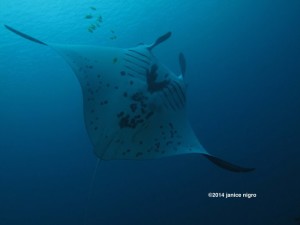 We shifted our eyes from macro to wide angle when we arrived at Manta Alley. Our backward roll was into an amphitheater formed of volcanic rock, and we descended to the sandy bottom at 25 meters where we remained stationary to watch the mantas overhead. The volcanic amphitheater provides a spectacular backdrop for viewing the manta rays, and at times, I forgot that I was there to watch the mantas and not the many sessile creatures that live in these walls as permanent spectators to the graceful pelagic animals. We viewed at least eight different manta rays, and on the second dive, the animals were even friendlier, swimming so close as if wanting to make contact. Afterwards when I asked about how to differentiate between male and female rays (I can’t leave the scientist at home), I learned, instead, that we actually saw the two types of manta rays, oceanic and reef, and that they are distinguishable largely based on patterns of coloration.
We shifted our eyes from macro to wide angle when we arrived at Manta Alley. Our backward roll was into an amphitheater formed of volcanic rock, and we descended to the sandy bottom at 25 meters where we remained stationary to watch the mantas overhead. The volcanic amphitheater provides a spectacular backdrop for viewing the manta rays, and at times, I forgot that I was there to watch the mantas and not the many sessile creatures that live in these walls as permanent spectators to the graceful pelagic animals. We viewed at least eight different manta rays, and on the second dive, the animals were even friendlier, swimming so close as if wanting to make contact. Afterwards when I asked about how to differentiate between male and female rays (I can’t leave the scientist at home), I learned, instead, that we actually saw the two types of manta rays, oceanic and reef, and that they are distinguishable largely based on patterns of coloration.
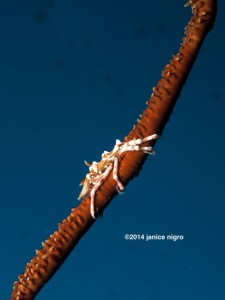 Horseshoe Bay is the dive destination within the heart of Komodo. It harbors a spectacular series of dives within a small area, and at the same time offers the first opportunity to view the infamous Komodo dragon in one of its natural habitats, the beach on Rinca Island. Here, crab eating macaques skip around on the rocky section of the beach collecting the shellfish when the tide is out, while the dragons slink out in public only when the sun is at its peak and the sand at its warmest. The dragons are surprisingly inactive and look more like statues sculpted from the very sand upon which they rest. They only appear to be alive because of their nonstop drool that seems thick enough to tether them to the beach. Fortunately, they do not like to swim so much.
Horseshoe Bay is the dive destination within the heart of Komodo. It harbors a spectacular series of dives within a small area, and at the same time offers the first opportunity to view the infamous Komodo dragon in one of its natural habitats, the beach on Rinca Island. Here, crab eating macaques skip around on the rocky section of the beach collecting the shellfish when the tide is out, while the dragons slink out in public only when the sun is at its peak and the sand at its warmest. The dragons are surprisingly inactive and look more like statues sculpted from the very sand upon which they rest. They only appear to be alive because of their nonstop drool that seems thick enough to tether them to the beach. Fortunately, they do not like to swim so much.
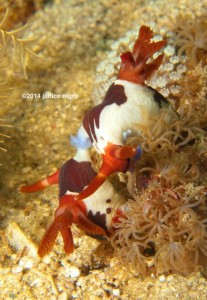 The dives in this area often had a bit of current at the surface, so negative entries were necessary. However, once under the surface, the current was not detectable. Cannibal Rock, named after a behavior of the dragons and not the humans, is a fabulous volcanic peak that you circle but never in a single dive, as it is crowded with soft corals, anemones, mating nudibranchs, frogfish, and shrimp. It is possibly the worse case of ADHD my eyes and I could ever have, because I could not prioritize where to stop and to look. Thankfully, I had the Incredibles, a.k.a. the dive guides from North Sulawesi, to help me sort it out and to identify specific, unique creatures. The Yellow Wall o’ Texas is one of the most extraordinary wall dives on the trip, in that the soft corals are swollen open all day long due to currents even in the bright sunlight. It is a hypnotic ride along a wall of soft corals and anemones rhythmically responding to the current, but macro creatures can be found if there is a break in the flow. I spotted an enormous tambja affinis nudibranch (not exactly macro) and two zebra crabs on a fire urchin glued to the wall.
The dives in this area often had a bit of current at the surface, so negative entries were necessary. However, once under the surface, the current was not detectable. Cannibal Rock, named after a behavior of the dragons and not the humans, is a fabulous volcanic peak that you circle but never in a single dive, as it is crowded with soft corals, anemones, mating nudibranchs, frogfish, and shrimp. It is possibly the worse case of ADHD my eyes and I could ever have, because I could not prioritize where to stop and to look. Thankfully, I had the Incredibles, a.k.a. the dive guides from North Sulawesi, to help me sort it out and to identify specific, unique creatures. The Yellow Wall o’ Texas is one of the most extraordinary wall dives on the trip, in that the soft corals are swollen open all day long due to currents even in the bright sunlight. It is a hypnotic ride along a wall of soft corals and anemones rhythmically responding to the current, but macro creatures can be found if there is a break in the flow. I spotted an enormous tambja affinis nudibranch (not exactly macro) and two zebra crabs on a fire urchin glued to the wall.
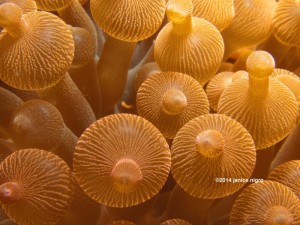 Eventually a dive comes along where I had to pay for all of the delicious desserts eaten on a 12-day liveaboard. The Three Sisters was finally that dive. The Three Sisters is a dive site of three underwater pinnacles that become progressively higher and are separated by several meters. The current was flowing into one side of the pinnacles so that the burn came at the entry just downstream of the current and in between them where the current ran through. On the entry, I refused to let my male dive guide get away from me so I kicked and kicked until I reached the other side of the ridge, stopped to breathe for a few minutes, and then proceeded.
Eventually a dive comes along where I had to pay for all of the delicious desserts eaten on a 12-day liveaboard. The Three Sisters was finally that dive. The Three Sisters is a dive site of three underwater pinnacles that become progressively higher and are separated by several meters. The current was flowing into one side of the pinnacles so that the burn came at the entry just downstream of the current and in between them where the current ran through. On the entry, I refused to let my male dive guide get away from me so I kicked and kicked until I reached the other side of the ridge, stopped to breathe for a few minutes, and then proceeded.
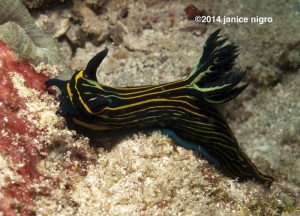 We were searching for the so-called chocolate crunchy peanut sea star (scientific name unknown), a species of starfish reportedly identified by the Seven Seas at this site, but instead found a giant yellow frogfish on the third sister and three orangutan crabs crowded on a single bubble coral on the sea floor. The highlight was a sort of underwater interracial couple, a trumpetfish closely lingering over a pufferfish. This behavior trick of the trumpetfish was not new to me. The trumpetfish hovers over the pufferfish just out of sight and is able to snatch unsuspecting fish that are normally at ease in the presence of the pufferfish. The pair really appeared to be more attentive to each other, like a romantic couple, rather than a devious trumpetfish camouflaged by a puffer. Rita, one of the other guests, even predicted the possible variations of their offspring if their real purpose was to mate. A spiny trumpetfish? A long snouted, yellow puffer?
We were searching for the so-called chocolate crunchy peanut sea star (scientific name unknown), a species of starfish reportedly identified by the Seven Seas at this site, but instead found a giant yellow frogfish on the third sister and three orangutan crabs crowded on a single bubble coral on the sea floor. The highlight was a sort of underwater interracial couple, a trumpetfish closely lingering over a pufferfish. This behavior trick of the trumpetfish was not new to me. The trumpetfish hovers over the pufferfish just out of sight and is able to snatch unsuspecting fish that are normally at ease in the presence of the pufferfish. The pair really appeared to be more attentive to each other, like a romantic couple, rather than a devious trumpetfish camouflaged by a puffer. Rita, one of the other guests, even predicted the possible variations of their offspring if their real purpose was to mate. A spiny trumpetfish? A long snouted, yellow puffer?
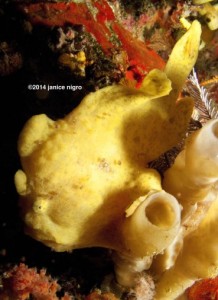 There were “sand-based” breaks from the boat. A very serious beach volleyball match took place between the crew, guests, and locals from an island that I can only report is somewhere. It was an unpredicted event in life. An easy hike to Pink Beach on another island to watch the sunset emphasized the remarkable diversity of the landscape of Komodo. The pink sand on this beach is created by the fragmentation of red coral.
There were “sand-based” breaks from the boat. A very serious beach volleyball match took place between the crew, guests, and locals from an island that I can only report is somewhere. It was an unpredicted event in life. An easy hike to Pink Beach on another island to watch the sunset emphasized the remarkable diversity of the landscape of Komodo. The pink sand on this beach is created by the fragmentation of red coral.
Beauty is flaunting itself everywhere in Komodo, but it lies deep within the muck dives if you are open to the challenge of finding it. I have noticed all too often divers surfacing before their 60 minutes are up in exasperation because muck dive sites are not “pretty”. To me, there is something compelling about these dives even though they at first may appear to be desolate. The dive guides always find something, so I take on these dives as a personal challenge to hunt as they do and persevere until the end of the 60 minutes as if I might find something awesome too! An easy afternoon muck dive at Wainilu proved exactly this point. For about the first 30 minutes of this dive, I felt as if I was immersed in a black and white photo, as there was low visibility and little sunlight. And then finally, a radiant spot of color, a yellow-ridged ceratosoma, appeared on the coral rubble. More nudibranchs came after that, including a huge, lumbering solar powered phyllodesmium longicirrum. Finally, our dive guide, digging through the coral rubble, uncovered a spiny tiger shrimp, one that I could actually see without a magnifying glass.
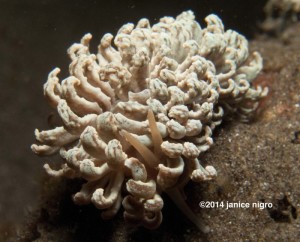 That feeling that a dinosaur would appear at any moment followed me throughout the trip, but it was especially on the night dives that I felt totally immersed in the primordial soup that is Komodo. Coral Garden is a name that sounds innocuous enough, but it was here that tiny bioluminescent beings hurled themselves at us at night. No one had a name for these creatures pulsating orange light, but I was clearly not the only one seeing them. At Torpedo Point in Horseshow Bay, I finally made a find that even the dive guide envied. Just as I reached the bottom, my flashlight beam caught a juvenile ornate ghost pipefish bouncing vertically over the sand as if its nose were too heavy. Our Incredible for the night dive quickly evened the score by finding the parent to the juvenile and then essentially outscored us by making torpedo rays appear out of the sand, revealing hidden shrimp in basket sea stars, and coercing delicate crabs out of their soft coral hideouts. Evolution seems to have a complete lack of any rational purpose when you evaluate the diversity of the creatures on these night dives.
That feeling that a dinosaur would appear at any moment followed me throughout the trip, but it was especially on the night dives that I felt totally immersed in the primordial soup that is Komodo. Coral Garden is a name that sounds innocuous enough, but it was here that tiny bioluminescent beings hurled themselves at us at night. No one had a name for these creatures pulsating orange light, but I was clearly not the only one seeing them. At Torpedo Point in Horseshow Bay, I finally made a find that even the dive guide envied. Just as I reached the bottom, my flashlight beam caught a juvenile ornate ghost pipefish bouncing vertically over the sand as if its nose were too heavy. Our Incredible for the night dive quickly evened the score by finding the parent to the juvenile and then essentially outscored us by making torpedo rays appear out of the sand, revealing hidden shrimp in basket sea stars, and coercing delicate crabs out of their soft coral hideouts. Evolution seems to have a complete lack of any rational purpose when you evaluate the diversity of the creatures on these night dives.
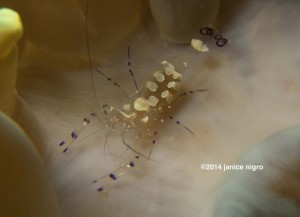 And at the end of a night dive, you surface under an unadulterated spectacle of the stars. In a place like Komodo, where there is no interference from man-made light, I could use even a weak flashlight, point to a star, and feel as if the beam of light reaches all the way into outer space and actually touches it. It occurred to me then that the magical life of Komodo might be created by some sort of a chemical reaction requiring the components of seawater and volcanoes and is ignited by sun-, star-, and moonlight.
And at the end of a night dive, you surface under an unadulterated spectacle of the stars. In a place like Komodo, where there is no interference from man-made light, I could use even a weak flashlight, point to a star, and feel as if the beam of light reaches all the way into outer space and actually touches it. It occurred to me then that the magical life of Komodo might be created by some sort of a chemical reaction requiring the components of seawater and volcanoes and is ignited by sun-, star-, and moonlight.
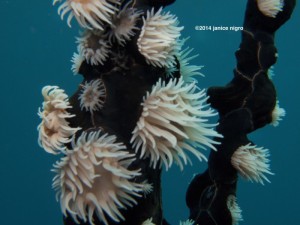 We were once again anchored in the harbor of Labuan Bajo, and Komodo and Rinca, Sangeang and Sumbawa were all new “is this even on Google maps” destinations that I had traveled to. Only the domestic flight remained. We had news that there had been an incident two days before where a cow wandered inadvertently in front of a jet that had just landed at the airport (the unpredictable). While no one was hurt, the plane was damaged, and this meant a delay as the airlines was catching up for the lack of flights on the two previous days. Considering these circumstances, I was, of course, anxious about the flight, but as we finally safely left the ground, I was more anxious about leaving Komodo and not ever returning.
We were once again anchored in the harbor of Labuan Bajo, and Komodo and Rinca, Sangeang and Sumbawa were all new “is this even on Google maps” destinations that I had traveled to. Only the domestic flight remained. We had news that there had been an incident two days before where a cow wandered inadvertently in front of a jet that had just landed at the airport (the unpredictable). While no one was hurt, the plane was damaged, and this meant a delay as the airlines was catching up for the lack of flights on the two previous days. Considering these circumstances, I was, of course, anxious about the flight, but as we finally safely left the ground, I was more anxious about leaving Komodo and not ever returning.
Gear News
Scubapro Free Octopus Promotion 2024

Free Octopus with every purchase of a SCUBAPRO regulator system
Just in time for the spring season, divers can save money with the FREE OCTOPUS SPRING PROMOTION! Until July 31st SCUBAPRO offers an Octopus for free
with every purchase of a regulator system!
Get a free S270 OCTOPUS with purchase of these combinations:
MK25 EVO or MK19 EVO with A700
MK25 EVO or MK19 EVO with S620Ti
MK25 EVO or MK19 EVO with D420
MK25 EVO Din mit S620Ti-X
Get a free R105 OCTOPUS with purchase of the following combinations:
MK25 EVO or MK19 EVO with G260
MK25 EVO or MK17 EVO with S600
SCUBAPRO offers a 30-year first owner warranty on all regulators, with a revision period of two years or 100 dives. All SCUBAPRO regulators are of course certified according to the new European test standard EN250-2014.
Available at participating SCUBAPRO dealers. Promotion may not be available in all regions. Find an authorized SCUBAPRO Dealer at scubapro.com.
More information available on www.scubapro.com.
Blogs
Northern Red Sea Reefs and Wrecks Trip Report, Part 3: The Mighty Thistlegorm

Jake Davies boards Ghazala Explorer for an unforgettable Red Sea diving experience…
Overnight, the wind picked up, making the planned morning dive a bit bumpy on the Zodiacs to the drop point on Thomas Reef. There, we would dive along the reef before descending through the canyon and then passing under the arch before ascending the wall with a gentle drift. The site provided great encounters with more pelagic species, including shoals of large barracuda, tuna, and bigeye trevally.
Once back on the boat, it was time to get everything tied down again as we would head back south. This time, with the wind behind us, heading to Ras Mohammed to dive Jackfish Alley for another great gentle drift wall dive before then heading up the coast towards the Gulf of Suez to moor up at the wreck of the Thistlegorm. This being the highlight wreck dive of the trip and for many onboard, including myself, it was the first time diving this iconic wreck. I had heard so much about the wreck from friends, and globally, this is a must on any diver’s list. Fortunately for us, there was only one other boat at the site, which was a rarity. A great briefing was delivered by Ahmed, who provided a detailed background about the wreck’s history along with all the required safety information as the currents and visibility at the site can be variable.

Kitting up, there was a lot of excitement on deck before entering the water and heading down the shoreline. Descending to the wreck, there was a light northerly current which reduced the visibility, making it feel more like the conditions that can be found off the Welsh coast. At 10m from the bottom, the outline of the wreck appeared as we reached the area of the wreck which had been bombed, as our mooring line was attached to part of the propeller shaft. Arriving on deck, instantly everywhere you looked there were many of the supplies which the ship was carrying, including Bren Carrier tanks and projectiles that instantly stood out.

We headed around the exterior, taking a look at the large propeller and guns mounted on deck before entering the wreck on the port side to take a look in the holds. It was incredible to see all the trucks, Norton 16H, and BSA motorcycles still perfectly stacked within, providing a real snapshot in time.

Overall, we had four dives on the Thistlegorm, where for all of the dives we were the only group in the water, and at times, there were just three of us on the whole wreck, which made it even more special, especially knowing that most days the wreck has hundreds of divers. Along with the history of the wreck, there was plenty of marine life on the wreck and around, from big green turtles to batfish, along with shoals of mackerel being hunted by trevally. Some unforgettable dives.

The final leg of the trip saw us cross back over the Suez Canal to the Gobal Islands where we planned to stay the night and do three dives at the Dolphin House for the potential of sharing the dive with dolphins. The site, which included a channel that was teeming with reef fish, especially large numbers of goatfish that swam in large shoals along the edge of the reef. These were nice relaxing dives to end the week. Unfortunately, the dolphins didn’t show up, which was okay as like all marine life they are difficult to predict and you can’t guarantee what’s going to be seen. With the last dive complete, we headed back to port for the final night where it was time to clean all the kit and pack before the departure flight the next day.

The whole week from start to finish on Ghazala Explorer was amazing; the boat had all the facilities you need for a comfortable week aboard. The crew were always there to help throughout the day and the chefs providing top quality food which was required after every dive. The itinerary providing some of the best diving with a nice mixture of wreck and reef dives. I would recommend the trip to anyone, whether it’s your first Red Sea liveaboard in the Red Sea or you’re revisiting. Hopefully, it’s not too long before I head back to explore more of the Red Sea onboard Ghazala Explorer.

To find out more about the Northern Red Sea reef and wrecks itineraries aboard Ghazala Explorer, or to book, contact Scuba Travel now:
Email: dive@scubatravel.com
Tel: +44 (0)1483 411590
Photos: Jake Davies / Avalon.Red
-

 News3 months ago
News3 months agoHone your underwater photography skills with Alphamarine Photography at Red Sea Diving Safari in March
-

 News3 months ago
News3 months agoCapturing Critters in Lembeh Underwater Photography Workshop 2024: Event Roundup
-

 Marine Life & Conservation Blogs2 months ago
Marine Life & Conservation Blogs2 months agoCreature Feature: Swell Sharks
-

 Blogs2 months ago
Blogs2 months agoMurex Resorts: Passport to Paradise!
-

 Blogs2 months ago
Blogs2 months agoDiver Discovering Whale Skeletons Beneath Ice Judged World’s Best Underwater Photograph
-

 Gear Reviews3 months ago
Gear Reviews3 months agoGear Review: Oceanic+ Dive Housing for iPhone
-

 Marine Life & Conservation2 months ago
Marine Life & Conservation2 months agoSave the Manatee Club launches brand new webcams at Silver Springs State Park, Florida
-

 News3 months ago
News3 months agoWorld’s Best Underwater Photographers Unveil Breathtaking Images at World Shootout 2023









